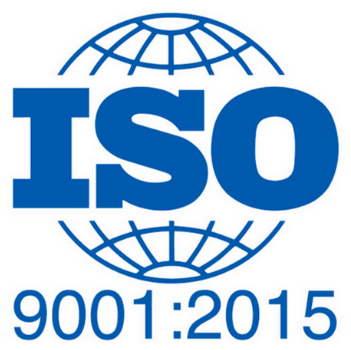Anti-PD-1 (RMP1-14)
Anti-PD-1 (RMP1-14)
| Product Specific Citations |
Liang et al. SIX4 Controls STING Expression Enhancing anti-PD-1 Efficacy. bioRxiv |
|---|---|
| Concentration | 1.0 - 5.0 mg/ml |
| Isotype | Rat IgG2a Kappa |
| Host | Rat |
| Use | Products are for research use only. Not for use in diagnostic or therapeutic procedures. |
| Application Notes | Blocking: Clone RMP1-14 antibody has been shown to block the binding of both mouse PD-L1-Ig and mouse PD-L2-Ig to PD-1. For immune checkpoint antibodies 200 ug per mouse per injection is the standard dosage in the literature. For this anti-PD-1 (clone RMP |
| Applications | Western Blot, Blocking, Flow Cytometry, Functional Assays |
| Storage | anti-PD-1 In Vivo Antibody - Low Endotoxin (RMP1-14) is stable when stored at 2-8°C. For longer term storage (> 3 months) it is recommended to store this antibody at -70oC. |
| Endotoxin | ≤ 1.0 EU/mg as determined by the LAL method |
| Purity | >95% by SDS-PAGE and HPLC |
| Formulation | 0.01 M phosphate buffered saline (PBS) pH 7.2, 150 mM NaCl with no carrier protein, potassium or preservatives added. |
| Purification Method | This monoclonal antibody was purified using Protein G |
| Specificity | Anti-PD-1 In Vivo Antibody - Low Endotoxin (RMP1-14) recognizes an epitope on Mouse PD-1 |
| Species Reactivity | Mouse |
| Target | PD-1 |
| Shipping Conditions | Blue ice |
| background | CD279, also known as programmed death-1 (PD-1) is a 50-55 kD immunoglobulin superfamily member. PD-1 is expressed on a subset of CD4-CD8- thymocytes, and on activated T and B cells. The PD-1 ligands, PD-L1 (also known as B7-H1) and PD-L2 (B7-DC), are memb |
| Other names | Programmed cell death protein 1, Pdcd1, CD279 |
| clone | RMP1-14 |
| UniProt | Q02242 |
| Buffer | ICH3001-100ml ICH3002-100ml ICH3003-100ml |
| Antigen Distribution | Subset of double negative thymocytes, activated T and B cells |
| Immunogen | Mouse PD-1 transfected BHK cells |
| Aggregation | Aggregation level ≤ 5% |
| Related Antibody | Anti-PD-1 In Vivo Antibody - Ultra Low Endotoxin [RMP1-14] (ICH1132UL) |
ichorbio Benefits:
ichorbio's anti-PD-1 In Vivo Antibody - Low Endotoxin (RMP1-14) is manufactured in a cGMP compliant facility. ichorbio has the folowing options:
- Low Endotoxin: <1EU/mg
- Ultra low endotoxin:<0.5EU/mg
- Extremely low endotoxin: 0.05EU/mg
- 5mg/ml concentration
- Mouse anti-mouse PD-1 (RMP1-14)
- Mouse anti-mouse PD-1 (RMP1-14) Fc Silenced.
- Click here for ichorbio's RMP1-14 antibodies and here to view ichorbio’s complete list of anti-PD-1 antibodies and biosimilars.
ichorbio: the best antibodies for in vivo research.
Related Products
Isotype Control:Rat IgG2a In Vivo Isotype Control - Low Endotoxin [1-1] (ICH2244)
Mouse anti Mouse version:Mouse Anti-Mouse PD-1 Antibody (RMP1-14) [ICH1182]
Mouse anti-mouse Fc Silenced version: Antibodies against the same target:Anti-PD-1 In Vivo Antibody - Low Endotoxin [29F.1A12] (ICH1091)
Product Information
Size:ichorbio's RMP1-14 in vivo antibody is available in the following sizes: 5mg, 25mg, 50mg and 100mg ichorbio regularly manufactures bulk multi-gram amounts of our anti-PD-1 RMP1-14 clone - please contact us for pricing.
Uniprot: Antigen Distribution:Subset of double negative thymocytes, activated T and B cells
Immunogen:Mouse PD-1 transfected BHK cells
Purity:>95% by SDS-PAGE and HPLC >98% by SDS-PAGE and HPLC
Endotoxin:
≤ 1.0 EU/mg as determined by the LAL method
≤ 0.75 EU/mg as determined by the LAL method
<0.05 EU/mg as determined by the LAL method
Aggregation:
Aggregation level ≤ 5%
Aggregation level ≤ 1%
IMPACT Pathogen Test:
We use the IMPACT test generated by IDEXX Laboratories to guarantee our Ultra Low & Extremely Low Endotoxin antibodies are pathogen free. Our rat antibodies are tested for:
- Mycoplasma spp
- Mycoplasma pulmonis
- Pneumonia virus of mice
- Kilham's rat virus
- Toolan's H1 virus
- Rat parvovirus
- Lymphocytic choriomeningitis virus
- Rat cytomegalovirus
- Sendai virus
- Rat coronavirus
- Sialodacryoadenitis virus
- Rat minute virus
- Seoul virus
- Mouse adenovirus
- Reovirus 3
- Rat theilovirus
This antibody is stable for at least 4 weeks when stored at 2-8°C. For long term storage, aliquot in working volumes without diluting and store at – 20°C or -80°C. Avoid repeated freeze thaw cycles.
Applications:Western Blot, Blocking, Flow Cytometry, Functional Assays
How much RMP1-14 to use in vivo:Blocking: We recommend using between 2.50 or 7.50 mg/kg when performing in vivo research using ichorbio’s PD-1 low endotoxin antibody clone RMP1-14. This range is based off the most recent publication data using the RMP1-14 clone in vivo. Each investigator should determine their own optimal working dilution for specific applications.
Use:Products are for research use only.
Alternative Names:- CD279 antibody
- CD279 antigen antibody
- hPD 1 antibody
- hPD l antibody
- hPD-1 antibody
- hSLE1 antibody
- PD 1 antibody
- PD-1 antibody
- PD1 antibody
- PDCD 1 antibody
- PDCD1 antibody
- Programmed cell death 1 antibody
- Programmed cell death 1 protein antibody
- Programmed cell death protein 1 antibody
- Protein PD 1 antibody
- Protein PD-1 antibody
- SLEB2 antibody
- Systemic lupus erythematosus susceptibility 2 antibody





















